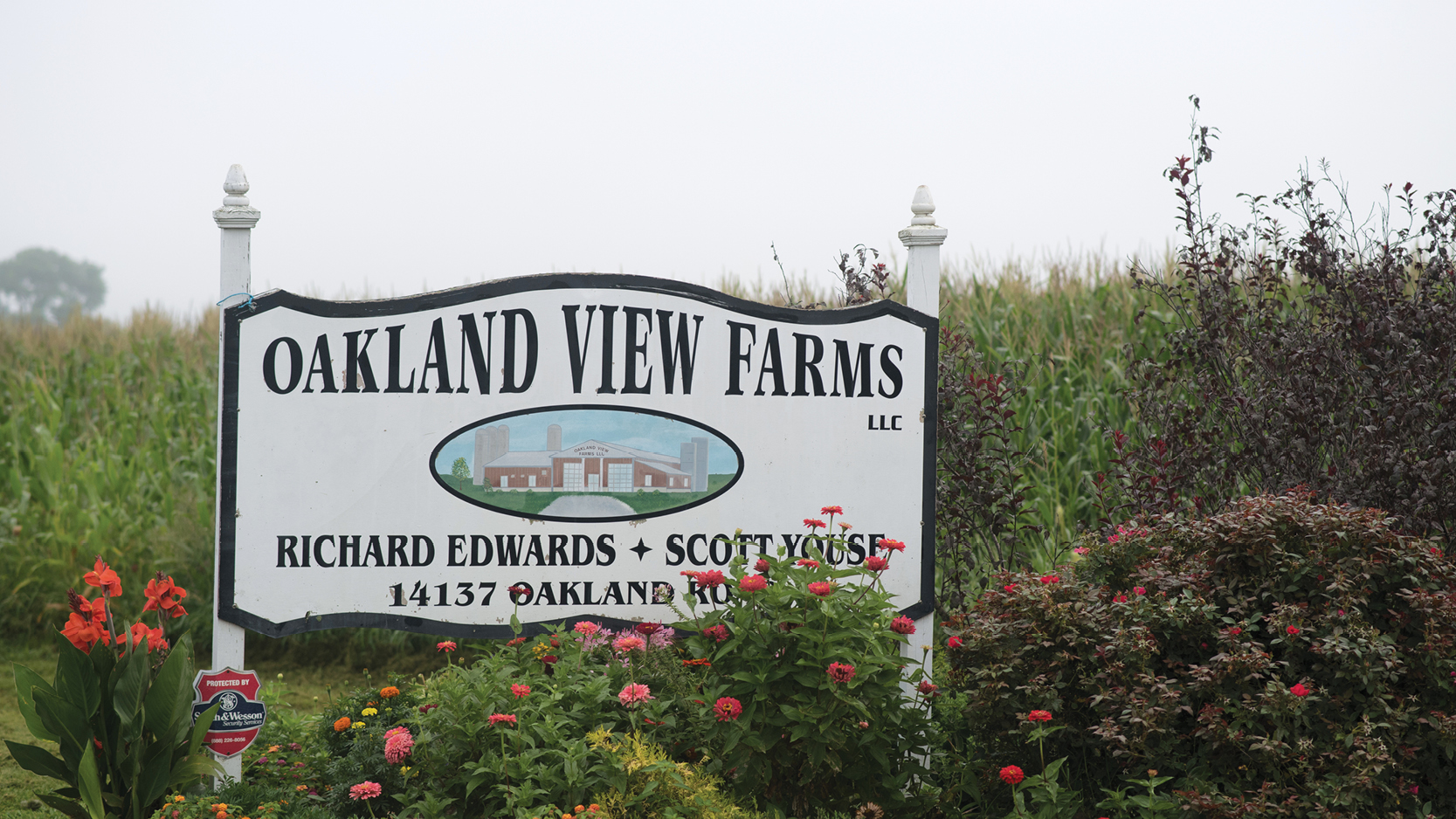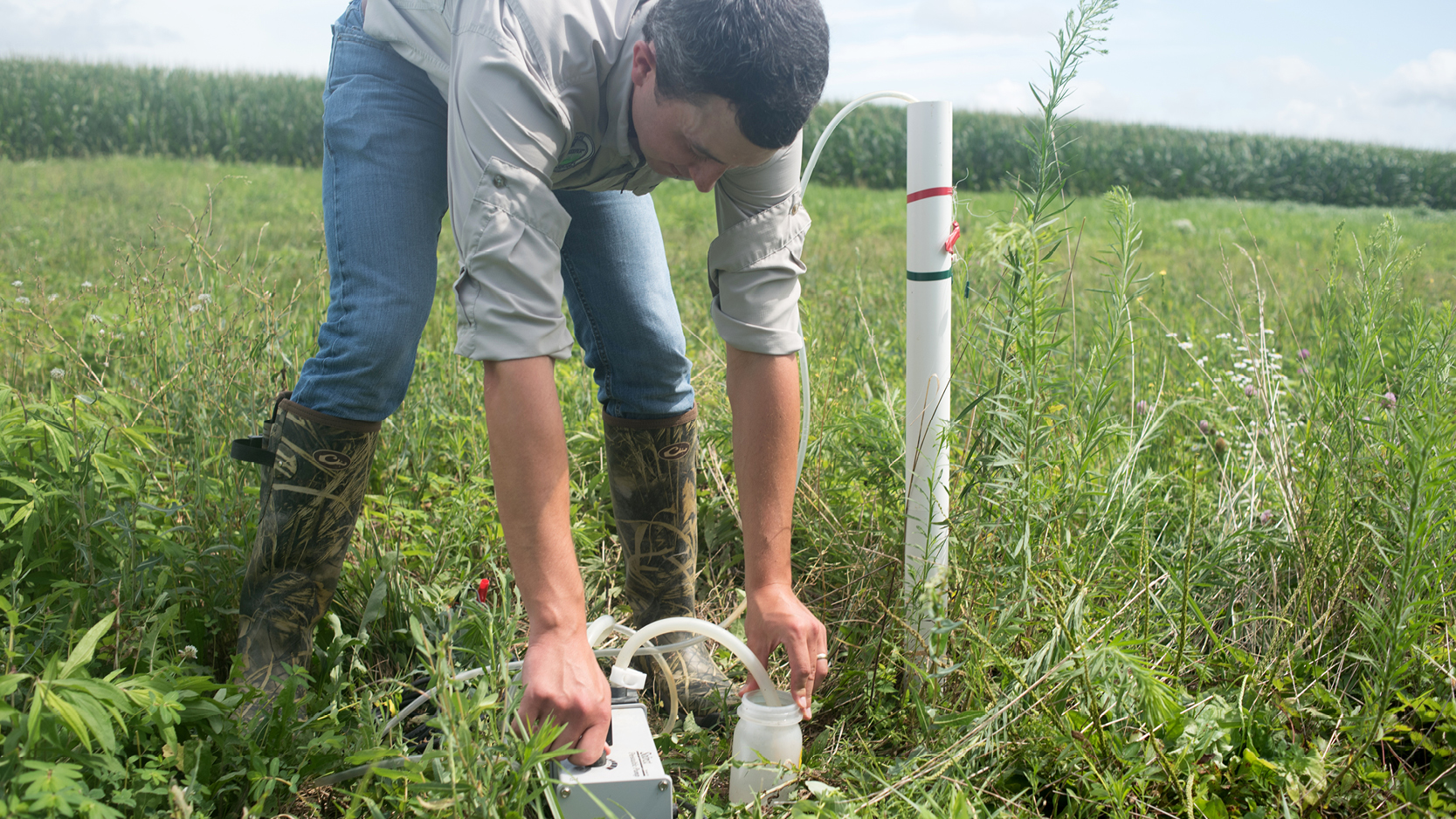The year was 2010. The location, the Chesapeake Bay watershed, which spans more than 64,000 square miles and encompasses parts of six states—Delaware, Maryland, New York, Pennsylvania, Virginia and West Virginia, to be specific.
Farmers were in the news. Most of the focus was on chicken farming this time, but considering agricultural use accounts for 60 percent of the land within the watershed, all farmers were watching. Water quality tests revealed phosphorus and nitrogen levels had doubled since 1985, putting pressure on the environment.
Agriculture was seen as a possible source, leading to debates between farmers and environmental advocates. Some disputes had turned into legal battles—contributing to farms leaving the area.
But out of this turbulent time, a first-of-its-kind partnership was formed. A Maryland dairy, Oakland View Farms, decided to partner with Midshore Riverkeeper Conservancy (MRC), a water quality advocacy non-profit organization.
Rather than digging their heels in and casting blame, Oakland View Farms and MRC decided to find common ground and develop mutually acceptable solutions. Together, they implemented the first woodchip bioreactor in Maryland—improving both water quality and trust amongst the two communities.
The partners
Established in the 1950s, Oakland View Farms is a fourth generation dairy farm located in Ridgely, a small town near Maryland’s eastern shore. It’s been a part of the Land O’Lakes, Inc. cooperative system for nearly as long.
The farm is a family affair. Richard (Dickie to his friends) and Janise Edwards, along with their daughter Jill Youse, her husband Scott and their teenage kids, Patrick and Natalie, milk 700 cows and farm 1,450 acres. Both kids show cows on a state and national level. And while Natalie isn’t sure exactly what her plans are yet, Patrick is hoping to take over the farm someday.
It’s no surprise, then, that continually improving the sustainability of their operation has always been a focus. You see, for farmers, sustainability is multi-dimensional. Yes, it’s about being a good steward of animals and natural resources. It’s also about passing a viable business onto the next generation.
But when you’re as close to the Chesapeake Bay as Oakland View Farm is, surrounded by water on all sides, natural resources are top of mind.
That abundance of water also means environmental advocates have become increasingly more active in the area, one of those being MRC. The organization’s mission is to restore and protect the waterways of the eastern shore of Maryland and its impact on the Chesapeake Bay watershed through education, outreach and restoration projects. It’s part of the national Riverkeeper organization and the international grassroots advocacy group, the Waterkeeper Alliance.
Stepping back to 2010, the community’s perception was that the primary way to protect water quality was to reduce agriculture in the area. This solution wouldn’t have been without side effect. The local economy would have suffered and multi-generational family businesses would have been forced to shuttered their barn doors.
There was a better solution. MRC representatives approached Oakland View Farms with an innovative idea—proactively partnering together. The dairy was quick to agree.
Each side brought its unique knowledge and new perspectives to the table. Oakland View Farms gave MRC a deeper understanding of the dairy industry, the specific farm environment and the daily ins-and-outs of farm management. MRC brought its extensive hydrology knowledge and understanding of water quality impairments in the area. The organization also helped secure grant money and technical resources.
As to why these sometimes adversaries would join together? Turns out both sides had a number of shared goals.

Goal 1: Improve water quality in the community
In 2013, Oakland View Farms decided to install the first woodchip bioreactor in Maryland. It might sound high-tech, but the bioreactor works much like a wetland. An underground trench is filled with woodchips. As groundwater seeps through the trench, the woodchips filter nitrates out.
The bioreactor was placed at the end of the field, so land wasn’t taken out of production, and connected to the subsurface drain system, which are buried tiles that direct the flow of drainage water. After installation, the woodchip bioreactor reduced nitrate concentrations by 100 percent. This was great news, as excess nitrates can lead to water quality problems such as algae blooms.
The best news, the bioreactor should also be able to maintain this level of efficiency for more than 20 years.

Goal 2: Establish cost-effective, adoptable solutions
Before the bioreactor was installed, cost-effectiveness and replicability were major considerations. The farm couldn’t afford a major financial or management investment, nor could they afford to lose land. MRC and the farm had to look for solution that gave them the most environmental bang for their buck. A cost-effective, replicable solution also bolstered the hope that other dairies in the area would be able to adopt the same practices.
The woodchip bioreactor was ultimately funded by Maryland Department of Natural Resources and National Fish and Wildlife Foundation. Also, as the first bioreactor in the state, MRC worked with United States Geological Survey, the University of Illinois and the University of Maryland to secure Chesapeake Bay Trust funds. Once the bioreactor was implemented, MRC designed a water sampling plan to track the successes. For two years, the organization used this data to make adjustments and develop case studies.
The strategy worked. Since their pioneering partnership in 2010, there have been six more partnerships between MRC and the agriculture community. And seven woodchip bioreactors have been installed.
Goal 3: Restore trust
The success of this partnership proves that there is power in cooperatively working together. Trust can be rebuilt. And dairy farmers and environmental advocates can coexist while working towards mutual benefits for both sides. It’s a win/win for the Ridgely community, the Chesapeake Bay watershed and, ultimately, the world.